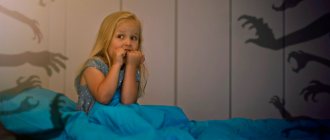Each person perceives the surrounding reality in a special way and processes the information received from it. Auditory people are people who receive most of their information through hearing. For visual learners, the leading channel of perception is the visual. Kinesthetic people perceive the world through various movements and sensations (touches, smells, etc.).
Of course, this classification is arbitrary, and besides, it is difficult to meet people who fully correspond to any one type, but even at an early age we can talk about the predominance of a certain type of perception in a child.
Why is it necessary to know which category your baby belongs to? This will allow him to competently develop new skills and abilities, and will make the process of acquiring knowledge both more productive and more exciting. The child will more firmly assimilate the information received, and it will become easier for parents to build relationships with him.
How do children of different types of perception differ and how to determine the leading channel for receiving information?
Types of perception channels and how to work with them
Audials
There are many music fans among audio audiences
These kids love to listen. There are many music fans among audiophiles; they prefer audio books. If you see that during a lesson a child repeats after you, pronounces a new rule, or mumbles, it means that you have a typical auditory learner.
Auditory learners are easy to recognize by their speech: they speak measuredly, rhythmically, often nodding in time with the tempo of their speech. If such a child retells the content of a film or book, get ready to listen to all the details with a verbatim reproduction of the characters’ lines. This flow cannot be stopped with the words: “Everything is clear, move on!” If you interrupt the auditory speaker, he will lose the thread of the conversation.
Auditory learners often have a melodic voice. In an unfamiliar company, they quickly make friends and become leaders.
It is believed that about 5% of people are auditory. Read more: How to distinguish an auditory child.
Visual child
Visual learners instantly remember faces, but often forget first and last names. They easily find their way even to places they have only been to once. The speech of visual children is filled with the words “look”, “have you seen”, “beautiful”, “bright”, “red”, “green”... They think in images. In the process of thinking, pictures from the past, ideas about the future, images appear in their heads, and imaginary situations are played out. Little visual learners have a wild and lively imagination.
Children with visual perception do not like hugs and kisses, but they will willingly talk to you about adult topics. They usually look older than their age because they keep themselves aloof and a little arrogant. They love to lecture their elders and quote phrases “from TV,” which they adore. They sense your mood and desires by your facial expressions, but do not always let you understand this (of course, in their own interests). Visual learners have excellent visual memory and fine motor skills are well developed, but they have difficulty understanding verbal instructions and often repeat tasks. Quickly remembers color, shape, size. They find it easy to tell stories based on pictures. Their eyes are always searching for information.
Visual children begin to write in block letters early and can read quite fluently by the time they reach school. In raising a visual student, it is necessary to pay attention to the development of speech (he is taciturn), sociability (the ability to communicate), and physical coordination. Visual students remember the teacher’s explanations more easily if they are duplicated on the school board or on diagram posters: it is easier for them to see and visually remember the word than to understand the rule why they should write it that way. Visual aids, illustrations, the use of colored pencils: sketch, reproduce, highlight - all this contributes to better assimilation of the material.
Allow your child to use colored pens to highlight important points in the book. As visual learners, it is vital for them to have a draft in which they can draw and draw.
How to work with auditory learners?
The way to the heart of an auditory child is through sounds. Do you want to distract him from trifles and extraneous matters? Play an unfamiliar melody (he will start singing along with the familiar one). These children better perceive information that comes against the background of musical accompaniment. You won’t understand how you can do your homework to the roar of rock music or Timati’s recitative. And for the auditory, music overshadows all extraneous sounds and allows you to focus on the main thing. But there are also auditory learners who can only work in silence, and any sounds will greatly distract them.
You can play music during lessons for auditory learners. A new topic can be told with musical accompaniment.
Auditory learners are also very responsive to the timbre of your voice and the rhythm of your speech. Therefore, it is good if the teacher, while explaining a new topic, highlights important intonation points and new rules.
For better memorization, the auditory learner needs to speak the information received. If there are more children in your class with an auditory perception of the world around them, take note of teaching techniques from elementary school: repeating out loud with the whole class, in rows, in turns, individually.
Auditory learners can be encouraged to use audio books and audio courses. This will allow you to work more efficiently.
Visuals
Visual learners are children who perceive the world through their eyes.
Their speech often contains figurative expressions related to vision: look, see, bright, colorful, names of colors, apparently. Visual learners are very attentive to others, they will be the first to determine what has changed in the room or in the picture, and the first to pay attention to the new things of their classmates. They think in images, so they often have artistic talent, they draw, sculpt, and design well.
According to psychologists, about 60% of children have developed visual memory. So it’s no wonder if the majority of the class turns out to be visual learners.
Features of each type of perception
Visuals
The peculiarity of this type of people is that they are receptive to what is visible. They appreciate beauty in the surrounding space and do not tolerate disorder or dirt well. In the life of a visual person there are many ideas, dreams, dreams. They are often generators of ideas, since they can create completely unusual associations and connections in their imagination.
Audial
They perceive the world around them, paying especially close attention to sounds. They love music, melodies, and can often hum to themselves and hum songs. Sensitive and receptive to conversations, auditory people have acute hearing and good memory, especially auditory memory. They often choose as their occupation everything related to music, melodies, and oratory.
Kinesthetic
Kinesthetics are very sensitive to everything that happens around them. Their bodily and emotional sensations are closely intertwined. They love bodily comfort, the convenience of the surrounding space. Uncomfortable clothing or a thread tickling their neck can irritate a kinaesthete student. They love deep personal discussions, communication with emotional exchange, discussion of how others feel. For the kinesthete, touch has the deepest meaning and great value.
Digital
People of this type of perception are rarer. They tend to perceive the world around them through inner speech, through dialogue with themselves. Such people are primarily focused on the perception of meaning, logic, and consistency. Digital people always strive to understand and comprehend the essence of what is happening. They may be sensitive and vulnerable, but the world is interesting to them from the point of view of understanding meaning and logic, patterns. In a stressful situation, it is digitals that best maintain composure and calm, and can maintain clarity of thought and perception of the surrounding space.
Strictly speaking, the distribution of people into visual, auditory, kinaesthetic, and digital types is very simplified. In fact, each of these types can be mixed, or maybe with a different leading hemispheric system, which increases the number of options. But we'll talk about this later.
Of course, in each of us there is no pure one type of perception, sometimes they are mixed, sometimes the type of perception is different in a calm and emergency environment, in different situations. But understanding your leading system will allow you to better assimilate any information, understand your interlocutor and better convey your thoughts to him. Understanding your type of perception (visual, auditory, kinesthetic, digital) will allow you to understand how to study specifically for you, taking into account your individual characteristics.
How to work with visual children?
Visual learners need to be shown graphs, pictures, photographs. They will remember the rule more easily if they see it written on a poster in bright letters. When creating visual images, teachers are recommended to use different colors and fonts. Highlight the most important things in a bright, rich color, make the font larger - this will make it easier for the visual to perceive the information.
Draw, underline the necessary information, use crayons and markers, allow children to copy from the board “as is”, allow them to use colored pens, pencils and highlighters. Visuals work well with flashcards and other handouts.
When explaining new material to a visual person, it is highly undesirable to stand opposite. Such children do not tolerate close contact well and do not like having their view blocked. If you have more visual learners in your class, it is best to explain the topic by standing next to them or slightly behind them.
By the way, it is visual learners who like to sit at the first desk, so let such children take these places.
Kinesthetics
For kinesthetic learners, the world opens up through sensations and touches.
The words they often hear in their speech are: feel, feel, hot-cold, soft, comfortable, etc. Kinesthetic learners' speech is slow and measured; during a conversation they often touch their face or fidget with something in their hands.
In the classroom, such children are easily recognized by their activity. It is kinesthetics who are often classified as “restless, hyperactive.” If such a child is brought under control, within a few minutes he begins to fidget, twitch his legs, tap his fingers, chew a pen or pencil, and tug at his hair.
Kinesthetic children usually have difficulty learning to read and often cannot remember and apply even the simplest rule. But it is kinesthetic learners who make the best actors, athletes and dancers.
Visual, auditory, kinaesthetic, digital in communication
Visuals
“You meet people by their clothes...” the beginning of this famous proverb applies entirely to visual people. They attach significant importance to a person’s appearance and always pay attention to how a person looks, what clothes he is wearing, what facial features he has, how he moves.
When communicating, they can look into the eyes calmly and for a long time. Visual contact, inverted posture in communication, open postures are extremely important for the visual person. At the same time, they do not like to be close to their interlocutor and keep their distance. The main thing is to see well. Representatives of this type of perception quickly intuitively read the signals of body language and facial expressions, often without noticing it. Sometimes it seems to them that just by looking at them they know the thoughts of another person.
If you need to impress a visual person, try to pay the most attention to external beauty. The environment, your clothes, gait, facial expressions, and gestures should be as inviting as possible. To prove your words, provide clear examples, graphs, drawings, and be sure to demonstrate your arguments using samples and experiments. Show a picture instead of numbers: visual learners will have difficulty understanding the difference between 1000 and 10,000, but a visual example of the difference will convince them in most cases.
Visual artists themselves are good storytellers. They can imagine amazingly vivid and detailed pictures and talk about them for hours.
Audial
A conversation with an auditory student is often very pleasant. Auditory learners themselves are demanding of their speech; they speak measuredly, with competent changes in intonation. It’s nice to listen to them, it’s nice to talk to the auditory. But auditory learners themselves are very demanding of the speech of their interlocutors; they cannot tolerate errors in speech, incomprehensible and distorted speech. It is absolutely forbidden to shout or raise your voice at auditory learners; this will lead to alienation of the person. Audials are always a pleasure to listen to; they are wonderful storytellers and no less wonderful interlocutors, who can understand at a glance by their intonation and manner of speech.
Kinesthetic
Kinesthetic learners are especially sensitive to spatial surroundings and distances between interlocutors. Close people are allowed into the personal zone, but people they don’t know well are kept at a distance. For kinesthetes, an invasion of their personal zone is offensive, and they begin to experience strong negative emotions. It is best to gain the attention and trust of the kinaesthetic through actions, joint affairs, and common activities.
If you have to remember something, it is better to write it or draw it yourself. Conversations and verbal evidence will make the least impression on a person of this type of perception. And the kinaesthetic always strives to touch and stroke close people. Physical contact is important to him.
Digital
They are insensitive in communication and rarely show emotions in public. Particular attention is paid to the semantic, substantive part of the conversation. Beautiful but empty speech is unpleasant to them. With digital, it is best to get to the point in a conversation, proving the logic and correctness of your words with numbers and facts.
How to work with kinesthetic children?
Kinesthetic learners perceive the world better through tactile sensations. When explaining a topic, allow such a child to do something with his hands: move pencils, crumple plasticine or a soft sponge.
If you see that the child does not know where to place his hands when answering, give him a small object in his hands: a pen, a pointer, a notepad, and the kinesthetic student will immediately feel confident.
When there are several children in the class with a kinesthetic channel of perception at once, do not forget to pause and conduct physical education during the lesson. A couple of minutes of active movement - and the kinesthetic child is ready to work again.
Another important point: provide the kinesthetic learner with an algorithm of actions: what we are doing now and what we are doing later. And an explanation is required - why is this needed? If such a child is allowed to learn the cosine theorem, he will immediately forget it. And if you explain that this theorem is needed for the correct wallpapering, success is guaranteed. That is, when teaching kinesthetic learners, be sure to offer a practical “link” of any rule or information to the realities of life.
Kinesthetic learners take a very long time to make a decision; they need to get used to this decision and feel it. Don’t put pressure on him, a child with a kinesthetic channel of perception “takes a long time to harness, but rides more confidently.”
Digitals
There are very few such children, no more than 1-2%. These are people who perceive only logic. From digital kids you can often hear expressions with the words: know, understand, think, logically, obviously. Until such a child understands the topic, he will not leave you with questions and will pester you: “How does it work? Why does this work? These are child researchers who will definitely disassemble a new machine to examine its structure. Children with a digital perception channel grow into talented chess players, programmers, scientists and researchers.
How to determine a child's psychotype
The psychotypes of children are very different. Parents need to understand how to determine a child’s psychotype in order to raise him correctly.
Let the child imagine that he is alone in the forest: representatives of different psychotypes have different imaginations. The visual depicts colorful landscapes with centuries-old pine trees, flowering meadows and hare tracks on the path. The audio speaks of the rustling of grass, the hubbub of leaves and the chirping of birds. Kinesthetics are attracted by the fresh smell of pine needles, the delicate taste of strawberries and supple moss underfoot. But digital will immediately require a map or compass to get out of the forest!
Peculiarities of perception leave an imprint on speech. Visual learners actively resort to visual metaphors, auditory learners turn to hearing, and kinesthetic learners – to smell, touch and taste.
An auditory learner will use words related to hearing: “speak”, “be silent”, “quiet”, “loud”. Visual learners focus on words related to vision: “light”, “dark”, “see”, “look”. Kinesthetic learners describe their gestures and feelings: “touch”, “hold”, “hot”, “cold”, but digital learners use words related to logic: “obviously”, “it should be so”, “it follows from this”.
When talking, the auditory learner looks straight, the visual learner looks up, and the kinesthetic learner looks down.
Auditory child
These children remember in great detail who said what, where, when, and in what words. They instantly “grab” first names and patronymics, but easily forget faces. Their greatest pleasure is conversation; they will never be interested in a book if they have someone to talk to. All secrets and news immediately become known to them. No, they are not specifically trying to find out what you are talking about, it’s just that their hearing is much better developed than others. Auditory children have a large vocabulary, but may lag slightly behind their peers in the development of skills related to visual (finding differences in pictures) and motor (the ability to deftly climb a slide, run quickly and for a long time) perception.
In their speech, auditory learners often use the words “listen”, “hear”, “noisy”, “quiet”.
Such children think through internal speech, mentally pronouncing their own remarks and the interlocutor’s answers, assuming what kind of voice he will have, what intonation. They love the radio. They like television programs that are dominated by “words” rather than “pictures.” They are very attentive in conversations. In a conversation with an auditory speaker, it is useful to use vocal features: pauses, intonation, volume.
In primary school, auditory learners often study well; their strength is developed auditory memory and speech, but they often have difficulties with spelling and drawing. In middle school, auditory learners who are accustomed to using their memory usually demonstrate significantly less success. During this period, you should pay more attention to reading, pronouncing, and repeating the rules out loud. Auditory learners are musical and easily grasp foreign languages. They are recommended to use audio materials first. When doing homework, such children may move their lips and talk to themselves. Another feature of auditory learners that is associated with difficulties at school is the ability to tell only from the very beginning.










